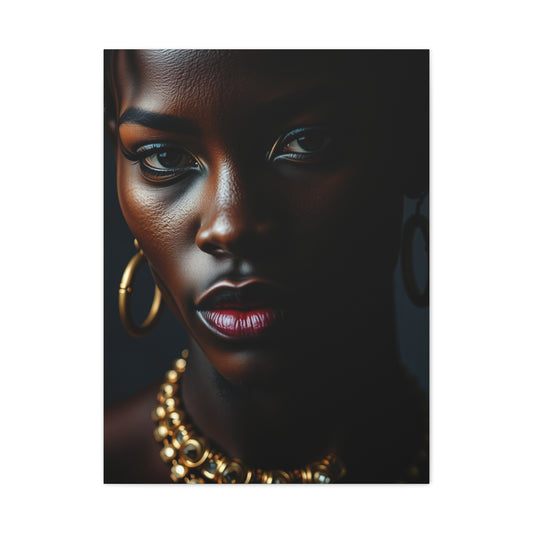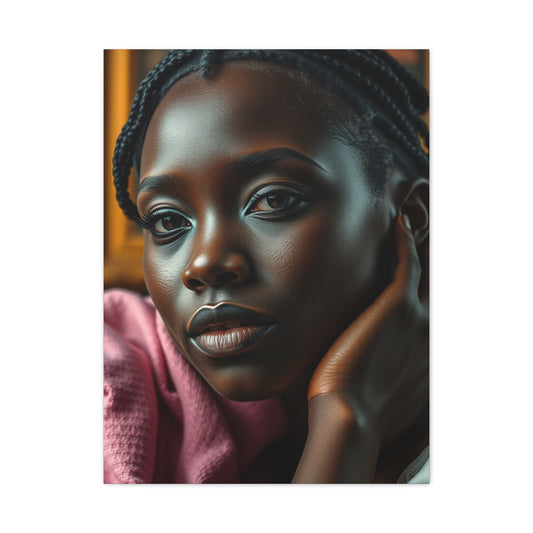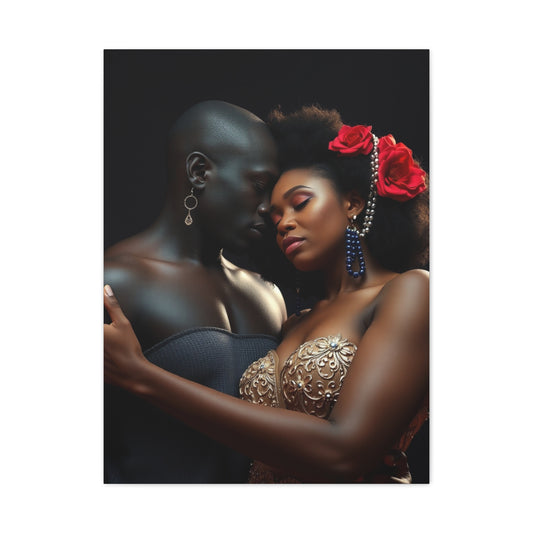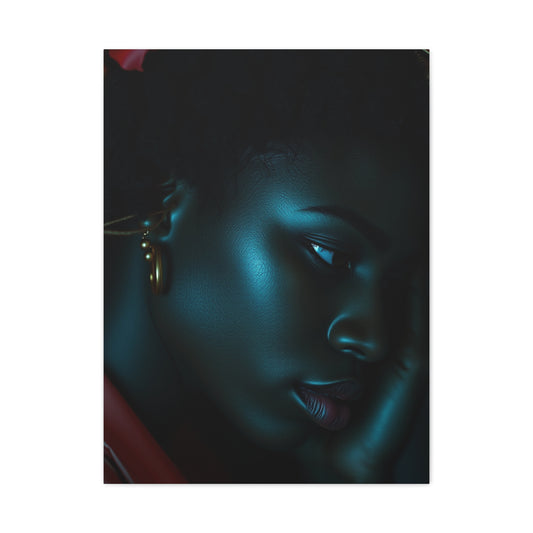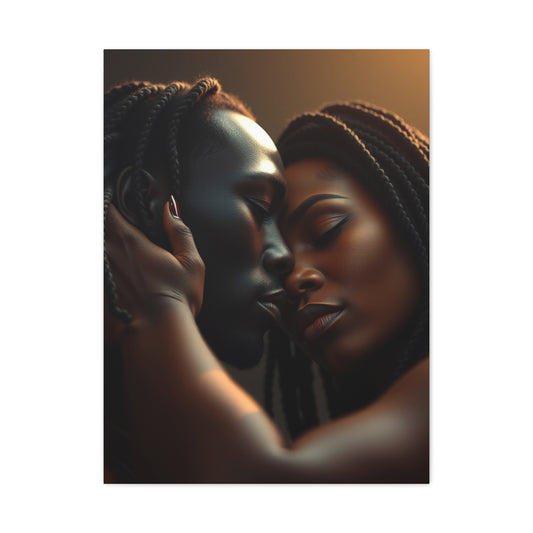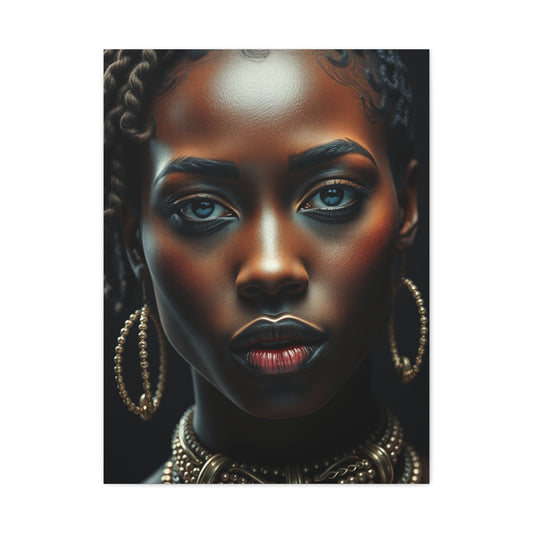Sophisticated Black love Framed Wall Art Concepts That Transform Your Living Space
The allure of obsidian-hued wall decor encased in sophisticated frames transcends fleeting design trends, establishing itself as a cornerstone of enduring interior aesthetics. This particular artistic approach demonstrates remarkable versatility, seamlessly integrating into diverse architectural styles while maintaining its distinguished presence. The inherent sophistication of charcoal-toned artwork creates an atmosphere of refined elegance that resonates with contemporary sensibilities.
Dark-framed artistic compositions possess an extraordinary capacity to harmonize with virtually any chromatic environment, serving as both focal points and complementary elements within residential spaces. The psychological impact of these monochromatic masterpieces extends beyond mere visual appeal, influencing the perceived dimensions and ambiance of interior environments. Professional interior designers consistently advocate for incorporating these statement pieces due to their transformative potential and adaptability.
The strategic placement of ebony-framed artwork can dramatically alter spatial perception, creating illusions of depth and sophistication that enhance the overall aesthetic value of residential properties. These artistic investments demonstrate longevity in both style and emotional connection, maintaining their relevance across evolving design movements. The universal appeal of dark-toned framed art stems from its ability to anchor design schemes while providing flexibility for future decorative modifications.
Contemporary homeowners increasingly recognize the investment value of quality framed artwork, particularly pieces featuring sophisticated dark palettes that maintain their visual impact over extended periods. The manufacturing processes behind premium framed art ensure durability and preservation of artistic integrity, making these selections practical as well as aesthetically pleasing. The growing appreciation for minimalist design principles has further elevated the status of monochromatic framed compositions.
Chromatic Harmonies and Palette Coordination Strategies
The integration of noir-toned framed artwork within existing color schemes requires thoughtful consideration of complementary and contrasting hues that enhance rather than compete with the primary artistic elements. Sophisticated palette coordination involves understanding the subtle interplay between warm and cool undertones present in both the artwork and surrounding environmental elements. The strategic use of chromatic relationships can amplify the visual impact of dark-framed pieces while maintaining overall design coherence.
Emerging color trends favor the juxtaposition of deep charcoal tones with softer, more delicate shades such as blush pink, powder blue, and muted lavender. These combinations create dynamic visual tension while preserving the serene quality essential to residential comfort. The inclusion of earth-toned neutrals such as sage green, warm taupe, and mushroom gray provides sophisticated alternatives that maintain professional aesthetics.
The psychology of color interaction plays a crucial role in determining the emotional response to interior spaces featuring dark-framed artwork. Warm undertones in surrounding elements can soften the potentially stark appearance of black compositions, while cooler palettes can enhance their modern, architectural qualities. The balance between contrast and harmony determines the overall success of chromatic integration.
Professional color consultants recommend establishing a primary chromatic foundation before introducing dark-framed artistic elements, ensuring that these statement pieces enhance rather than dominate the intended aesthetic vision. The temporal nature of color trends necessitates selecting complementary hues that possess enduring appeal while allowing for periodic accent updates. The investment in quality dark-framed artwork provides a stable foundation for evolving design preferences.
Advanced color theory applications involve understanding the reflective properties of different surface textures and how they interact with dark-framed compositions under various lighting conditions. Natural light sources can dramatically alter the perceived intensity and character of both the artwork and surrounding chromatic elements throughout daily cycles. Artificial lighting strategies must complement these natural variations while maintaining consistent visual harmony.
Bedroom Sanctuary Design Through Dark Artistic Elements
The incorporation of sophisticated ebony-framed artwork within sleeping spaces requires particular attention to creating atmospheres conducive to rest while maintaining aesthetic sophistication. The psychological effects of color and imagery within bedroom environments directly impact sleep quality and emotional well-being, making thoughtful selection crucial for optimal residential functionality. Dark-toned artistic compositions can provide grounding visual anchors that promote relaxation when properly integrated.
Contemporary bedroom design principles emphasize the importance of balancing visual stimulation with tranquil qualities essential for restorative sleep. The strategic placement of dark-framed artwork can create intimate, cocoon-like environments that feel secure and comforting without appearing oppressive or confining. The scale and subject matter of bedroom artwork must support rather than energize the space's primary function.
The interaction between natural and artificial lighting sources significantly affects the perceived character of bedroom artwork throughout daily cycles. Morning light conditions should enhance the awakening process while evening illumination should support relaxation and preparation for rest. The positioning of dark-framed pieces must consider these varying light conditions to maintain appropriate atmospheric qualities.
Professional bedroom designers recommend establishing clear visual hierarchies that guide attention toward primary resting areas while providing interesting secondary focal points for contemplation. The selection of artwork subject matter should promote positive associations and emotional states conducive to personal sanctuary experiences. Abstract compositions often prove most successful in bedroom applications due to their interpretive flexibility.
The integration of dark-framed artwork with bedroom storage solutions and functional elements requires careful planning to maintain clean, uncluttered appearances essential to restful environments. The visual weight of significant artistic pieces must be balanced with practical considerations such as furniture placement and traffic flow patterns. Successful bedroom designs achieve harmony between aesthetic aspirations and functional requirements.
Advanced bedroom lighting design strategies involve layered illumination approaches that can highlight artwork during social periods while providing appropriate dimming capabilities for rest preparation. The installation of specialized art lighting systems allows for precise control over the presentation of valuable framed pieces while maintaining flexibility for different usage scenarios. These technical considerations enhance both the appreciation and preservation of artistic investments.
Abstract Artistic Expression and Contemporary Appeal
The enduring popularity of abstract artistic compositions within residential interiors stems from their capacity to provide visual interest without imposing specific interpretive requirements on viewers. This artistic freedom allows for personal interpretation while maintaining broad appeal across diverse aesthetic preferences and cultural backgrounds. The psychological benefits of abstract art include stress reduction and enhanced creativity through exposure to non-representational visual stimulation.
Contemporary abstract artwork demonstrates remarkable versatility in coordinating with evolving design trends while maintaining its essential character and visual impact. The non-specific nature of abstract compositions allows them to serve as either dominant focal points or supportive background elements depending on the overall design strategy. This flexibility makes abstract pieces excellent long-term investments for dynamic residential environments.
The creation of abstract artwork involves sophisticated understanding of color theory, compositional balance, and visual rhythm that translates into powerful design tools for interior applications. Professional artists working in abstract mediums often possess advanced training in these fundamental design principles, resulting in compositions that demonstrate inherent design intelligence. The selection of quality abstract pieces ensures compatibility with professional interior design standards.
Modern abstract movements continue to evolve, incorporating new materials, techniques, and conceptual approaches that maintain relevance with contemporary aesthetic sensibilities. The investment in current abstract artwork provides opportunities to participate in ongoing artistic developments while acquiring pieces that may appreciate in cultural and economic value. The selection process should consider both immediate aesthetic appeal and potential long-term significance.
The psychological impact of abstract artwork varies significantly based on color palette, compositional complexity, and scale relationships within the viewing environment. Darker abstract compositions can provide grounding influences that promote contemplation and introspection, while maintaining sufficient visual interest to prevent monotony. The strategic selection of abstract pieces can influence the emotional character of residential spaces in subtle but meaningful ways.
Advanced abstract art appreciation involves understanding the historical context and artistic movements that influence contemporary creation, providing deeper levels of engagement with selected pieces. This knowledge enhances the long-term satisfaction derived from artistic investments while providing conversation topics for social interactions. The educational value of quality abstract artwork extends beyond mere decoration.
Freedom Through Artistic Expression and Creative Liberation
The philosophical foundations of abstract artistic expression center on the liberation from representational constraints that allow artists to explore pure form, color, and compositional relationships without external reference requirements. This creative freedom translates into viewing experiences that encourage personal interpretation and emotional response rather than intellectual recognition of depicted subjects. The psychological benefits of engaging with abstract artwork include enhanced imagination and reduced analytical stress.
Contemporary abstract artwork serves as a catalyst for personal creativity and self-expression within residential environments, providing visual stimulation that can inspire occupants' own creative endeavors. The presence of sophisticated artistic compositions can elevate the cultural atmosphere of homes while demonstrating the residents' appreciation for artistic achievement. These environmental influences contribute to enhanced quality of life and personal satisfaction.
The democratic nature of abstract art appreciation removes barriers related to cultural knowledge or artistic education that might limit engagement with more traditional artistic forms. This accessibility makes abstract pieces excellent choices for diverse households where aesthetic preferences may vary among occupants. The universal appeal of well-executed abstract compositions ensures broad acceptance and long-term satisfaction.
Professional abstract artists often develop unique stylistic approaches that distinguish their work within the broader artistic marketplace, providing opportunities for collectors to acquire pieces with distinctive character and potential appreciation value. The investment in original or limited-edition abstract artwork supports contemporary artistic production while acquiring pieces that demonstrate individual taste and cultural awareness. These considerations enhance both personal satisfaction and potential economic benefits.
The integration of abstract artwork within residential design schemes requires understanding of how non-representational compositions interact with functional elements and architectural features. The strategic placement of abstract pieces can create dynamic visual relationships that enhance spatial perception while maintaining appropriate scale relationships. Professional design consultation may prove valuable for optimizing these artistic investments.
Dimensional Considerations and Scale Optimization
The selection of appropriate artwork dimensions represents a critical factor in achieving successful integration within residential spaces, with undersized pieces representing one of the most common design errors encountered by professional consultants. The visual impact of artistic compositions depends heavily on their proportional relationships to surrounding architectural elements and furniture arrangements. Mathematical approaches to scale selection can eliminate guesswork while ensuring optimal visual results.
Contemporary interior design principles emphasize the importance of creating visual impact through strategic use of oversized artistic elements that command attention while maintaining appropriate relationships to human scale. The psychological effects of large-scale artwork include enhanced spatial perception and increased emotional engagement with the artistic content. These dimensional strategies can transform ordinary rooms into sophisticated gallery-like environments.
The architectural context of artwork placement must accommodate both the physical dimensions of selected pieces and the visual space requirements for optimal appreciation. Wall surfaces should provide adequate surrounding area to prevent crowded appearances while allowing the artwork to establish its intended presence within the room. The relationship between artwork size and furniture scale requires careful coordination to maintain visual harmony.
Professional measurement techniques involve considering viewing distances, lighting angles, and traffic flow patterns that affect the optimal positioning and sizing of significant artistic investments. The goal is to create viewing experiences that allow for both distant appreciation of overall composition and closer examination of artistic details. These technical considerations ensure maximum value from artistic acquisitions.
The economic aspects of artwork sizing must balance the desire for visual impact with practical considerations such as shipping costs, installation requirements, and potential relocation flexibility. Larger pieces typically command higher prices but may provide better value in terms of visual impact per dollar invested. The selection process should consider both immediate needs and potential future applications.
Gallery Wall Configuration Strategies
The creation of sophisticated gallery wall arrangements requires advanced understanding of compositional principles that govern the successful combination of multiple artistic elements within unified presentations. Contemporary gallery wall design moves beyond simple grid arrangements to embrace more dynamic, organic compositions that reflect curatorial sophistication. The strategic combination of different sizes, frames, and artistic styles can create museum-quality presentations within residential settings.
Professional gallery wall planning begins with establishing primary focal points around which supporting elements can be arranged to create visual flow and hierarchical relationships. The selection of a central statement piece provides stability for the overall composition while allowing for creative variation in surrounding elements. This approach ensures coherent results while maintaining opportunities for personal expression and artistic diversity.
The spatial mathematics of gallery wall arrangement involves calculating optimal spacing relationships between individual pieces while maintaining appropriate proportions to the available wall surface. Professional designers often use paper templates or digital planning tools to experiment with different configurations before making final installation commitments. These planning techniques prevent costly installation errors and ensure optimal results.
Contemporary gallery wall strategies often incorporate mixed media elements such as photographs, prints, and three-dimensional objects to create rich, layered presentations that maintain visual interest over extended viewing periods. The coordination of different media types requires understanding of how various materials and surface qualities interact under different lighting conditions. These advanced techniques create sophisticated presentations that demonstrate curatorial expertise.
The long-term flexibility of gallery wall installations must accommodate potential additions, substitutions, and rearrangements as collections evolve and personal preferences change. The initial design should allow for these modifications while maintaining the essential character of the overall presentation. Modular approaches to gallery wall design provide maximum adaptability while ensuring continued aesthetic success.
Oversized Statement Pieces and Dramatic Impact
The strategic deployment of monumentally scaled artwork creates immediate visual drama while establishing clear design hierarchies within residential spaces that might otherwise lack distinctive character. Contemporary interior design increasingly embraces the psychological impact of oversized artistic elements that challenge conventional scale expectations while maintaining appropriate relationships to human occupancy. These bold design strategies demonstrate sophisticated understanding of spatial dynamics and visual psychology.
The architectural requirements for successfully integrating oversized artwork extend beyond simple wall space availability to include structural considerations, lighting requirements, and installation logistics that must be addressed during the planning phases of interior design projects. Professional installation may be required for large-scale pieces, adding to the total investment but ensuring proper presentation and preservation of valuable artistic acquisitions. These technical considerations are essential for long-term satisfaction.
The economic advantages of investing in single large-scale pieces rather than multiple smaller works include reduced framing costs, simplified installation processes, and greater visual impact per dollar invested. Large format artwork typically commands attention more effectively than collections of smaller pieces, making them excellent choices for spaces where immediate impact is desired. The selection process should prioritize quality over quantity for optimal results.
Contemporary oversized artwork production techniques allow for the creation of pieces with exceptional detail retention and color stability that maintain their visual impact over extended periods. Digital printing technologies and advanced pigment systems ensure that large-scale reproductions preserve the artistic integrity of original compositions while providing accessibility to broader audiences. These technical advances enhance the value proposition of oversized artistic investments.
The psychological effects of living with monumentally scaled artwork include enhanced spatial perception, increased emotional engagement with the artistic content, and elevated sense of cultural sophistication within the residential environment. These environmental influences contribute to improved quality of life while demonstrating refined aesthetic sensibilities. The long-term benefits of oversized artistic investments extend far beyond mere decoration.
Asymmetrical Balance and Dynamic Compositions
Advanced compositional strategies for gallery wall arrangements embrace asymmetrical balance principles that create dynamic visual tension while maintaining overall harmony within the presentation. Contemporary design theory recognizes that perfect symmetry can appear static and unengaging, while thoughtfully planned asymmetrical arrangements provide ongoing visual interest that rewards continued observation. These sophisticated design approaches demonstrate professional-level understanding of compositional principles.
The mathematical foundations of successful asymmetrical balance involve understanding visual weight distribution and how different elements contribute to overall compositional stability. Factors such as color intensity, scale relationships, and positional hierarchy all influence the perceived balance of artistic arrangements. Professional designers develop intuitive understanding of these relationships through experience and education in fundamental design principles.
Contemporary asymmetrical design strategies often incorporate negative space as an active compositional element that contributes to overall visual success rather than simply serving as background area. The strategic use of empty wall space can enhance the impact of artistic elements while providing visual rest areas that prevent overwhelming presentations. These advanced techniques demonstrate sophisticated understanding of spatial relationships.
The temporal aspects of asymmetrical arrangements must accommodate viewing experiences from multiple positions and distances within residential spaces, ensuring that the compositions remain successful from various perspectives. Dynamic arrangements should provide different visual experiences as viewers move through the space while maintaining overall coherence. These considerations require three-dimensional thinking during the planning process.
The psychological benefits of asymmetrical artistic arrangements include enhanced visual engagement, reduced predictability, and increased opportunities for personal interpretation and discovery. These dynamic presentations can maintain interest over extended periods while providing conversation topics for social interactions. The investment in professionally planned asymmetrical arrangements demonstrates sophisticated aesthetic sensibilities.
Symmetrical Coordination and Classical Harmony
Traditional symmetrical arrangement principles continue to provide reliable frameworks for creating sophisticated artistic presentations that demonstrate timeless aesthetic sensibilities while accommodating contemporary artistic content. The psychological comfort derived from symmetrical compositions makes them excellent choices for spaces where stability and formal balance are desired over dynamic visual excitement. These classical approaches have proven their enduring value across cultural and temporal boundaries.
Contemporary interpretations of symmetrical design principles allow for subtle variations and creative flexibility while maintaining the essential balance characteristics that define this organizational approach. Perfect mathematical symmetry may appear rigid in residential settings, while thoughtful variations can provide visual interest without sacrificing the fundamental harmony that makes symmetrical arrangements appealing. Professional designers understand how to achieve optimal balance between order and variety.
The architectural context of symmetrical arrangements must consider the existing structural elements and furniture positioning that will interact with the artistic presentation to either support or undermine the intended balance. Successful symmetrical installations require careful attention to the surrounding environmental factors that influence visual perception of the arrangement. These considerations ensure that the artistic investment achieves its intended impact.
The selection of artistic elements for symmetrical arrangements requires understanding of how different visual weights, color intensities, and subject matters can be balanced to create harmonious presentations. Matching elements are not required for successful symmetrical arrangements, but visual equilibrium must be maintained through careful consideration of each element's contribution to the overall composition. These selection skills improve with experience and study.
The maintenance requirements of symmetrical artistic arrangements tend to be lower than those of more complex asymmetrical presentations, making them practical choices for busy households or commercial applications where consistent appearance is important. The stable character of symmetrical arrangements also makes them less likely to require frequent adjustments or modifications as surrounding elements change. These practical advantages enhance their long-term value.
Focal Point Establishment and Visual Hierarchy
The strategic establishment of primary focal points within residential spaces featuring dark-framed artwork requires understanding of how human visual perception naturally responds to different compositional elements and environmental cues. Professional interior designers leverage these psychological tendencies to create guided viewing experiences that enhance both the appreciation of artistic investments and the overall functionality of living spaces. These techniques ensure that significant artistic pieces receive appropriate attention while maintaining comfortable, livable environments.
Contemporary focal point strategies often involve creating layered visual hierarchies that provide multiple levels of interest without creating competing demands for attention that might diminish the impact of primary artistic statements. The coordination of lighting, furniture arrangement, and architectural elements can support the prominence of selected artwork while maintaining appropriate balance with functional requirements. These integrated approaches demonstrate sophisticated design thinking.
The psychological aspects of focal point establishment extend beyond simple visual prominence to include emotional and cultural associations that influence how occupants and visitors respond to residential spaces. Artwork selection and positioning can communicate values, interests, and aesthetic sophistication while contributing to the overall character and personality of the home. These environmental influences affect daily experiences and social interactions within the space.
Professional lighting design techniques specifically developed for artwork presentation can dramatically enhance the effectiveness of focal point strategies while preserving the long-term condition of valuable artistic investments. Modern LED technologies provide precise color rendering and adjustable intensity controls that allow for optimal presentation conditions throughout different usage periods. These technical capabilities enhance both the aesthetic and practical value of artistic collections.
The temporal considerations of focal point design must accommodate seasonal changes, evolving personal preferences, and potential modifications to surrounding elements that might affect the continued success of artistic presentations. Flexible design strategies allow for adjustments and updates while maintaining the essential character and investment value of significant artistic pieces. Long-term planning enhances the satisfaction and value derived from artistic investments.
Framed Artwork Advantages and Professional Presentation
The technical and aesthetic advantages of professionally framed artistic presentations extend far beyond simple protection considerations to include sophisticated visual effects that enhance the perceived quality and impact of the underlying artwork. Contemporary framing techniques utilize advanced materials and construction methods that provide museum-quality preservation while creating presentation effects that elevate even modest artistic pieces. These professional services represent investments in both protection and enhancement of artistic collections.
Modern framing technologies incorporate conservation-grade materials and techniques that prevent deterioration while maintaining optimal presentation conditions for various media types and artistic techniques. Acid-free mounting materials, UV-protective glazing, and climate-controlled spacing systems ensure long-term preservation while providing immediate visual benefits. These technical advantages justify the additional investment required for professional framing services.
The psychological impact of professional framing includes enhanced perceived value and increased emotional connection with the artistic content that results from improved presentation quality. Well-framed artwork commands greater attention and respect from viewers while contributing to the overall sophistication of residential environments. These psychological benefits extend beyond mere decoration to influence daily experiences and social interactions.
Contemporary framing design options accommodate diverse aesthetic preferences while maintaining professional presentation standards that ensure compatibility with sophisticated interior design schemes. The selection of frame styles, colors, and materials should complement both the artwork and the surrounding environment while demonstrating understanding of current design trends and timeless aesthetic principles. Professional framing consultants can provide valuable guidance in these selection processes.
The economic considerations of professional framing must balance the initial investment with long-term benefits including preservation value, enhanced aesthetic impact, and potential appreciation of the overall artistic presentation. Quality framing represents a permanent improvement that travels with the artwork through potential relocations and design changes. These long-term value considerations make professional framing an intelligent investment strategy.
Floating Illusion Effects and Visual Enhancement
The sophisticated visual effects created by contemporary floating frame systems demonstrate advanced understanding of how spatial relationships and shadow patterns can enhance the perceived quality and impact of artistic presentations. These technical achievements in frame design create illusions of weightlessness that add psychological interest while maintaining the protective and organizational functions essential to professional artwork presentation. The investment in floating frame technology provides both aesthetic and practical benefits.
Modern floating frame construction utilizes precision engineering and high-quality materials that ensure long-term stability while creating the visual effects that distinguish these systems from traditional framing approaches. The mathematical precision required for optimal floating effects demonstrates the technical sophistication of contemporary frame manufacturing. These advanced production techniques justify the premium pricing associated with floating frame systems.
The psychological responses to floating frame presentations include enhanced attention, increased perceived value, and greater emotional engagement with the artistic content that results from the unique visual characteristics of these systems. Viewers often express fascination with the apparent defiance of gravity that floating frames create, leading to increased appreciation and discussion of the presented artwork. These psychological benefits enhance the social value of artistic investments.
The architectural integration of floating frame systems requires understanding of lighting conditions and viewing angles that optimize the visual effects while ensuring appropriate presentation of the artwork under various environmental conditions. Professional installation techniques can maximize these effects while protecting the artistic investment from environmental hazards. These technical considerations ensure optimal return on the framing investment.
The maintenance and care requirements of floating frame systems differ from traditional framing approaches and must be understood to preserve both the artwork and the specialized framing effects over extended periods. Professional care instructions and periodic maintenance services ensure continued optimal presentation while protecting the artistic investment. These ongoing considerations are part of the total cost of ownership for floating frame systems.
Ethereal Presentation Qualities and Atmospheric Effects
The unique atmospheric qualities created by advanced framing systems contribute to the overall environmental character of residential spaces while enhancing the individual impact of artistic presentations. These sophisticated effects result from careful attention to spatial relationships, light interaction, and material properties that create viewing experiences transcending simple artwork display. The psychological benefits of these enhanced presentations include increased relaxation, enhanced creativity, and greater appreciation for aesthetic refinement.
Contemporary framing technologies leverage advanced understanding of light physics and visual perception to create effects that appear magical while relying on precise technical execution for their success. The interaction between ambient lighting conditions and specialized frame constructions can create dynamic presentations that change throughout daily lighting cycles while maintaining optimal viewing conditions. These technical achievements represent significant advances in presentation technology.
The cultural significance of ethereal presentation effects extends beyond individual aesthetic preferences to connect with broader human responses to beauty, mystery, and transcendence that influence emotional well-being and social interactions. Residential environments featuring sophisticated artistic presentations can become destinations for contemplation and cultural appreciation that enhance quality of life. These environmental benefits justify investments in advanced presentation technologies.
Professional design integration of ethereal presentation effects requires understanding of how these specialized systems interact with architectural elements, furniture arrangements, and daily usage patterns to ensure continued success over extended periods. The goal is to create permanent improvements that enhance daily experiences while protecting artistic investments. These integrated approaches demonstrate sophisticated design thinking and execution.
The selection criteria for ethereal presentation systems must consider both immediate visual impact and long-term compatibility with evolving design preferences and potential environmental changes. Investment in flexible, high-quality systems provides greatest long-term value while ensuring continued satisfaction with artistic presentations. These strategic considerations enhance both aesthetic and economic outcomes.
Low-Profile Integration and Refined Aesthetics
Contemporary design trends emphasize the importance of low-profile artistic presentations that integrate seamlessly with architectural elements while maintaining sufficient presence to achieve their intended aesthetic impact. This balanced approach demonstrates sophisticated understanding of how artistic elements can enhance rather than dominate residential environments. The psychological comfort derived from well-integrated artistic presentations contributes to daily satisfaction and long-term appreciation of living spaces.
Modern low-profile framing systems utilize advanced materials and construction techniques that minimize visual intrusion while maximizing protective and presentation functions essential to artwork preservation. These technical achievements allow for museum-quality presentation within residential contexts without the institutional appearance that might conflict with comfortable living requirements. The investment in low-profile systems provides both aesthetic and practical benefits.
The architectural compatibility of low-profile artistic presentations extends their applicability across diverse residential styles and scale requirements while maintaining professional presentation standards. These versatile systems accommodate both contemporary and traditional interior design approaches while demonstrating understanding of current aesthetic trends. The broad compatibility enhances the investment value of low-profile presentation systems.
Professional installation techniques for low-profile systems require understanding of wall construction, electrical requirements, and environmental conditions that affect long-term performance and appearance. Proper installation ensures optimal presentation while protecting both the artwork and the surrounding architectural elements from potential damage. These technical considerations are essential for successful outcomes.
The maintenance requirements of low-profile systems tend to be minimal while providing maximum long-term value through continued optimal presentation of artistic investments. The reduced visual complexity of these systems also makes them less likely to conflict with future design modifications or updates to surrounding elements. These practical advantages enhance their long-term value proposition.
Distinguished Appearance Standards and Professional Quality
The establishment of distinguished appearance standards within residential environments requires consistent attention to quality details and professional execution across all design elements including artistic presentations. Contemporary homeowners increasingly recognize that superior aesthetic results require investment in professional-grade materials and services that ensure long-term satisfaction and value. These quality standards elevate daily experiences while protecting significant investments.
Professional-grade artistic presentation systems demonstrate their quality through superior materials, precise construction, and attention to details that distinguish them from consumer-grade alternatives. The visual and functional differences justify premium pricing while providing enhanced performance and longevity that improve total value over extended ownership periods. These quality investments demonstrate sophisticated understanding of true value relationships.
The psychological impact of distinguished artistic presentations includes enhanced self-esteem, increased pride in residential environments, and greater confidence in social situations that involve home entertainment or professional meetings. These environmental influences contribute to overall quality of life while demonstrating cultural sophistication and aesthetic sensibilities. The benefits extend far beyond simple decoration to influence personal and professional relationships.
Contemporary distinguished appearance standards accommodate diverse aesthetic preferences while maintaining universal principles of quality, proportion, and craftsmanship that ensure broad acceptance and long-term satisfaction. The application of these standards requires understanding of both current trends and timeless principles that transcend temporary fashion cycles. Professional consultation can provide valuable guidance in achieving these quality standards.
The investment strategy for achieving distinguished appearance standards should prioritize quality over quantity while building collections that demonstrate coherent aesthetic vision and consistent execution quality. The gradual acquisition of fewer, higher-quality pieces typically provides better long-term satisfaction and value than rapid accumulation of lesser items. These strategic approaches enhance both immediate satisfaction and long-term investment outcomes.
Canvas Art Integration and Mixed Media Coordination
The successful integration of canvas artworks within broader artistic presentations requires understanding of how different media types interact visually and functionally to create cohesive yet dynamic environmental experiences. Contemporary design approaches embrace mixed media strategies that combine the textural richness of canvas presentations with the refined sophistication of framed pieces to achieve optimal variety and interest. These advanced coordination techniques demonstrate professional-level design thinking and execution capabilities.
Modern canvas production technologies provide exceptional quality and longevity that make them suitable for integration with high-value framed pieces without compromising overall presentation standards. Advanced printing processes and archival materials ensure that canvas artworks maintain their visual integrity and investment value over extended periods while providing textural variety that enhances environmental interest. These technical advances justify the inclusion of canvas elements in sophisticated artistic presentations.
The spatial dynamics of mixed media coordination require careful attention to scale relationships, visual weights, and compositional balance that accommodate the different characteristics of various presentation formats. Canvas pieces often provide textural softness and organic qualities that complement the precision and refinement of framed presentations while contributing to overall environmental warmth. These balanced approaches create more engaging and comfortable residential environments.
Professional mixed media installation techniques ensure optimal presentation of each element while creating unified environmental experiences that demonstrate curatorial sophistication. The coordination of different mounting systems, lighting requirements, and maintenance needs requires technical expertise that protects individual investments while achieving optimal collective impact. These professional services enhance both aesthetic and practical outcomes.
The long-term flexibility of mixed media presentations accommodates evolving collections and changing preferences while maintaining core aesthetic principles that ensure continued satisfaction. The strategic combination of different media types provides opportunities for future additions and modifications without requiring complete presentation redesign. These flexible approaches enhance the long-term value of artistic investments while providing ongoing opportunities for collection development.
Final Thoughts:
The exploration of sophisticated black love framed wall art underscores its transformative potential in shaping residential environments that resonate with elegance, emotional depth, and personal identity. These artistic compositions are far more than decorative accents; they serve as cultural statements, psychological anchors, and expressions of aesthetic discernment. By embracing the richness of obsidian tones and the subtle sophistication of carefully chosen frames, homeowners can cultivate interiors that communicate both timeless style and contemporary relevance.
The versatility of dark-framed artworks allows them to integrate seamlessly into diverse design contexts, from minimalist modern spaces to more traditional residential environments. Their inherent adaptability ensures that they function both as focal points that command attention and as complementary elements that unify surrounding design schemes. This dual functionality contributes to a sense of balance and intentionality within living spaces, enhancing the overall visual coherence of interiors while fostering emotional resonance with occupants.
Color coordination emerges as a central factor in maximizing the impact of these artworks. Dark palettes, when thoughtfully juxtaposed with complementary or contrasting hues, can enhance spatial perception, create visual depth, and evoke specific emotional responses. The integration of soft neutrals, muted pastels, and warm earth tones can temper the intensity of black compositions, creating spaces that are simultaneously stimulating and calming. Understanding the psychological effects of color interaction empowers homeowners and designers to craft environments that support wellbeing, creativity, and relaxation, particularly in intimate spaces such as bedrooms or personal sanctuaries.
Abstract compositions and contemporary artistic approaches further expand the possibilities for visual expression. By engaging with non-representational forms, viewers are invited to interpret meaning personally, fostering engagement, reflection, and creative inspiration. These works offer a liberating sense of visual freedom, while the presence of sophisticated framing ensures that even abstract pieces maintain structural cohesion and aesthetic integrity. Through strategic placement and thoughtful lighting, abstract and representational elements can coexist harmoniously, creating environments that are rich in visual interest without becoming overwhelming or disjointed.
The technical excellence of professional framing, floating systems, and low-profile installations cannot be overstated. Beyond preserving the integrity of the artwork, these solutions enhance presentation, create ethereal effects, and provide the flexibility necessary for evolving interior schemes. From the precise calibration of lighting to the careful consideration of scale and spatial dynamics, every detail contributes to an elevated visual experience. Homeowners who invest in these high-quality techniques achieve not only aesthetic satisfaction but also long-term preservation and sustained value.
Ultimately, sophisticated black love framed wall art represents a convergence of artistic mastery, psychological insight, and interior design intelligence. Its presence in a home elevates spaces from functional environments to immersive experiences, celebrating both cultural identity and personal expression. By thoughtfully integrating these works into carefully curated color schemes, spatial arrangements, and lighting strategies, residential interiors can achieve a level of refinement and emotional resonance that transcends mere decoration. In this sense, black-framed art becomes a catalyst for transformation, shaping not just the visual character of a home but also the lived experiences of those within it.
Embracing such artistic sophistication is an invitation to live amidst beauty, intention, and meaningful expression. The deliberate curation of dark-toned, expertly framed artworks empowers homeowners to create spaces that honor both aesthetic and emotional sensibilities, offering lasting inspiration, cultural affirmation, and the enduring satisfaction of a home imbued with artistry, identity, and soul.

